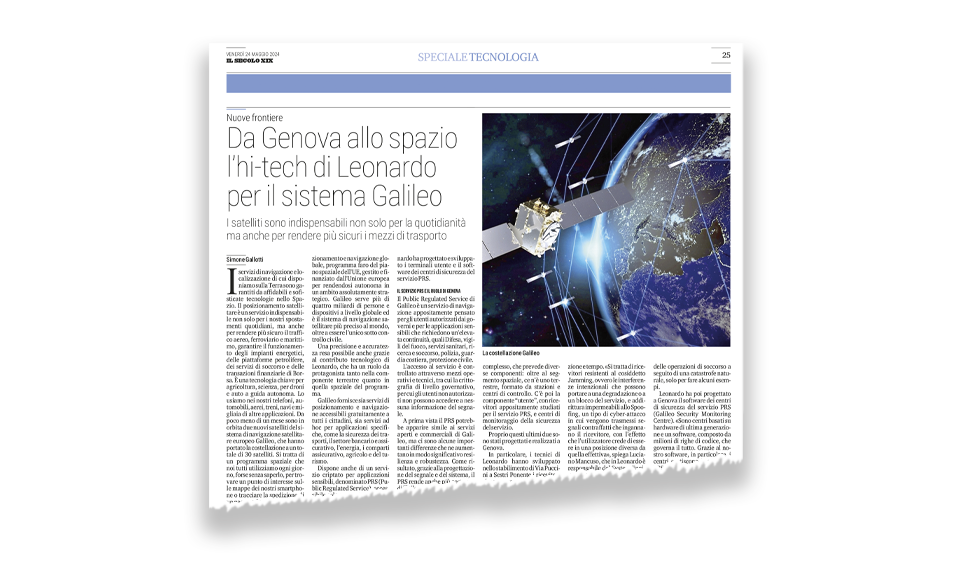We all use the Galileo programme’s functionalities daily, often without knowing it. The world’s most accurate satellite positioning and navigation system serves over four billion people and devices across the globe. For instance, we can use it to find a point of interest on our smartphone maps or track a parcel shipment. Space technologies provide the navigation and localisation systems we have on Earth. These systems make air, rail, and maritime traffic safer, and enable the functioning of energy plants, oil platforms, rescue services and stock exchange transactions. They are also a resource for agriculture, science, drones, and self-driving cars.
The precision and accuracy of Galileo, launched by the European Union with the support of the European Space Agency (ESA), is also due to Leonardo’s technological contributions to the terrestrial and space components. In Campi Bisenzio, near Florence, Leonardo creates star trackers to control the position of satellites. At the Fucino Space Centre, Telespazio has built one of the two control centres that manage the Galileo programme constellation and mission. Thales Alenia Space in Rome will build six of the twelve second-generation satellites to replace those in orbit. An industrial consortium of which Thales and Leonardo are members will also contribute to enhancing cyber security monitoring activities in the new system
The Group’s technological contribution also includes the creation of two components of the Public Regulated Service (PRS), an encrypted navigation service for authorised users and sensitive applications, described in Simone Gallotti’s article “From Genoa to Space, Leonardo’s hi-tech for the Galileo system” in Il Secolo XIX. Specifically, at its Sestri Ponente plant near Genoa, Leonardo Electronics has developed the receivers installed on the vehicles of the organisations using the service to provide reliable and precise position and time information. The company also designed the software for the PRS (Galileo Security Monitoring Centre). As noted in the article “Electronics, cybersecurity and communications. PRS is a flagship of the Italian colossus”, published in Il Secolo XIX, PRS supports the goal of global security by leveraging technologies such as electronics, cybersecurity, communications, command and control, and encryption.
The space technologies developed by Leonardo also include: hydrogen atomic clocks for the Galileo constellation satellites, which accrue a delay of just one second every three million years, allowing unprecedented precision in localisation; solar panels to power probes travelling to the Moon, Mars, and even Jupiter; and robotic arms and drills to analyse the soil of celestial bodies. These tools are developed at the Nerviano site, near Milan, whose activities are detailed in a report by TGR Lombardia, edited by Chiara Rancati, in which Franco Ongaro, Chief Space Business Officer, emphasises the company’s strong roots in the local production fabric and Lombardy’s aerospace industry.


